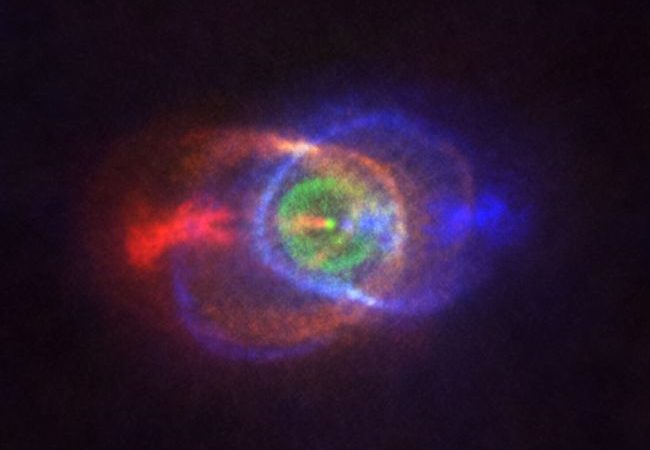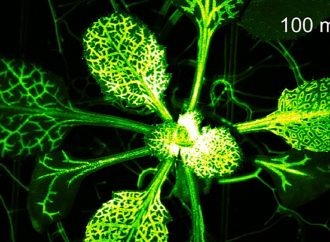The red giant star engulfed its smaller stellar companion
Source: Space.com
A stunning rainbow-colored cloud of gas surrounds a pair of stars that duked it out a few hundred years ago.
Using the Atacama Large Millimeter/submillimeter Array (ALMA), astronomers observed the binary star system called HD101584, revealing a peculiar gas cloud that is believed to be the result of a confrontation between the two stars, according to a statement from the European Southern Observatory.
Data from ALMA and the Atacama Pathfinder EXperiment (APEX) shows that one of the stars grew so large that it engulfed the other. As the smaller star spiraled towards its giant stellar companion, it caused the larger, sun-like star to shed its outer layers, resulting in the expanding clouds of gas captured in the newly released ALMA images.
Typically, when sun-like stars burn through all the hydrogen at their core, they become a bright red-giant star. When this type of star dies, it sheds its outer layers, leaving behind a hot, dense remnant called a white dwarf.
However, the evolution of the red giant in HD101584 “was terminated prematurely and dramatically as a nearby low-mass companion star was engulfed by the giant,” Hans Olofsson, an astronomer at the Chalmers University of Technology in Sweden who led new research on the star pair, said in the statement.
As the smaller star spiraled toward its larger companion, jets of gas formed, which, in turn, propelled the material ejected from the red giant out into space. This process formed the rings of gas and the bright blue and red blobs of material seen in the ALMA images. The blue clouds of gas represent the material moving the fastest toward us, while the red clouds of gas represent the material moving the fastest away from us, according to the statement.
Based on the ALMA observations, the researchers suggest the low-mass companion star was captured by the red giant star when it reached a critical size only a few hundred years ago, according to the statement.
The smaller star spiraled in towards the red giant, but stopped before reaching its core, which is why the pair appears so close together and is represented as a single bright dot at the center of ALMA image.
“Currently, we can describe the death processes common to many sun-like stars, but we cannot explain why or exactly how they happen,” a Sofia Ramstedt, co-author on the new research and an astronomer at Uppsala University in Sweden, said in the statement. “HD101584 gives us important clues to solve this puzzle since it is currently in a short transitional phase between better studied evolutionary stages. With detailed images of the environment of HD101584 we can make the connection between the giant star it was before, and the stellar remnant it will soon become.”
Their findings were published last year in the journal Astronomy & Astrophysics.
Source: Space.com

































Leave a Comment
You must be logged in to post a comment.